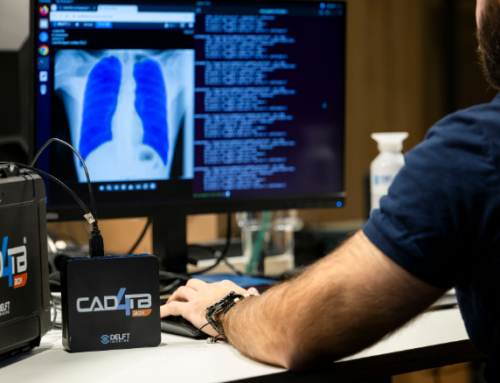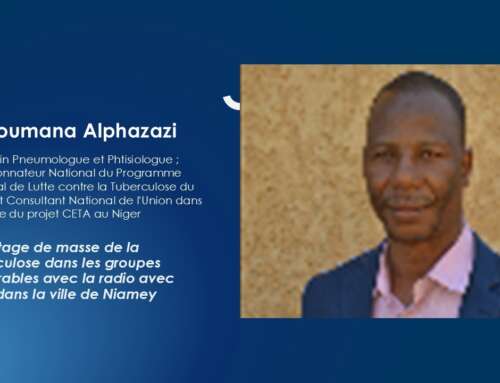In a recent Delft Imaging webinar titled “AI for TB Screening in Francophone Africa: Challenges, Opportunities and Impact,” Dr. Jean Hébélamou, Deputy Director General at the Centre Hospitalier Régional Spécialisé (CHRS) in Macenta, Republic of Guinea, presented compelling clinical insights into how AI-assisted radiography is being used to detect tuberculosis (TB) more effectively in rural West Africa.
Enhancing diagnostic capacity in a specialized TB center
“The regional hospital centre of Macenta is a centre specializing in the treatment of leprosy, tuberculosis, and HIV,” Dr. Hébélamou explained. “X-ray, the conventional radiology that we use today, was installed in 1989 and worked until 2023, a year in which automated interpretation of digital radiography was introduced by the Missions PhilAfricaine, our main partner.”
This upgrade marked a pivotal transition from analog diagnostics to digital radiography powered by CAD4TB. The intervention aligns with Guinea’s national TB control efforts and the World Health Organization’s recommendations on AI-assisted TB triage.
“About one-fourth of the world’s population is infected with tuberculosis,” Dr. Hébélamou added. “In Guinea, the incidence rate is 100 to 199 cases per 100,000 inhabitants per year.”
Clinical evidence: three case studies
To demonstrate how CAD4TB functions in real-world clinical settings, Dr. Hébélamou presented three patient cases screened at CHRS Macenta in 2025.
- Case 1: A 36-year-old HIV-positive woman presented with “cough, fever, dyspnea, and vomiting.” Her CAD4TB score was 84.75. “The GenExpert revealed positive, of course.” She received TB treatment (2RHZE/4RH) and continued her antiretroviral therapy.
- Case 2: A 41-year-old male farmer from Guayama showed similar symptoms. “The score showed us a value of 84.97. Therefore, a possible TB.” GeneXpert confirmed the diagnosis, and he was treated with the same six-month regimen.
- Case 3: A 73-year-old man from Kirwané, a mining region, had a CAD score of 94.81. “The GenExpert test that was required was not detected, and therefore negative.” Despite this, a diagnosis of miliary TB was retained. After two weeks of treatment, “the fever and other symptoms had lowered.”
Dr. Hébélamou noted that in cases of poor treatment response, differential diagnoses such as autoimmune fibrosis, sarcoidosis, or silicosis must be considered, particularly for patients from mining areas.
Benefits of AI for TB screening in rural settings
The use of CAD4TB has enabled clinicians at CHRS Macenta to act swiftly in initiating treatment, especially when molecular testing is delayed or unavailable. “The performance of automated reading helps to interpret images better and to diagnose tuberculosis quickly. Its use could increase the detection of tuberculosis at the Macenta CHRS.”
CAD4TB has proven valuable not only for HIV-positive patients but also in identifying cases in remote settings, where physical and financial access to diagnosis remains a barrier.
Remaining challenges and diagnostic considerations
Dr. Hébélamou also cautioned about the limitations of relying solely on AI. “All TB cases are still being reported even if the patient took their treatment correctly, because the system is still going to show it as being a new case. And it’s not specific, therefore, to active tuberculosis.” He emphasized the need for integration of alternative diagnoses: “This does not rule out other diseases with a similar differential diagnosis to TB… It’s important, therefore, to introduce those diseases in the CAD framework.”
A path forward
Since the 2023 installation of CAD4TB, CHRS Macenta has begun scaling its digital radiography workflow to support national TB case-finding goals better. As Dr. Hébélamou’s clinical cases show, AI tools can enhance diagnostic speed, guide treatment decisions, and support early detection in low-resource environments.



